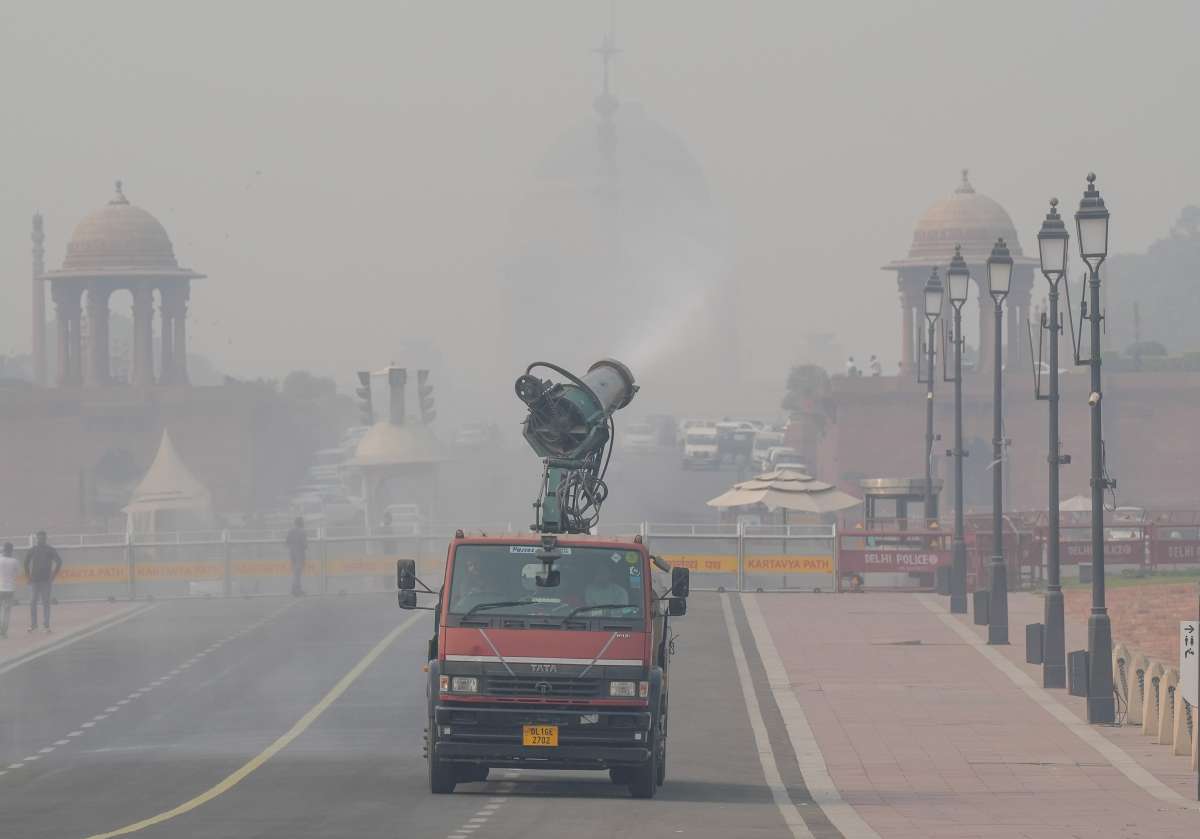 |
|
The India Meteorological Department (IMD) has issued a weather forecast for Delhi predicting a shift from the recent sunny spell to a cloudy sky with a possibility of light rain and thunderstorms on Wednesday evening. This change in weather conditions is significant given the preceding days of clear skies and the absence of fog. The forecast specifically mentions the likelihood of one or two spells of very light to light rain, accompanied by thunderstorms, during the evening and night hours of Wednesday. The anticipated weather pattern represents a departure from the recent comparatively dry and clear conditions experienced in the city. This change underscores the dynamic and unpredictable nature of weather systems, especially in the region encompassing Delhi.
The IMD's forecast also includes predictions regarding wind patterns and the development of smog and fog. The predominant surface wind is expected to be relatively calm, blowing from the north at less than 6 kilometers per hour in the morning. However, the wind speed is forecast to increase to 8 kilometers per hour from the northeast in the afternoon, before gradually decreasing again to less than 6 kilometers per hour from the northwest by the evening and night. These wind patterns play a crucial role in the dispersal or accumulation of pollutants in the atmosphere, directly influencing the formation of smog and fog.
A significant aspect of the IMD's prediction is the expected formation of smog and fog in Delhi. The forecast indicates that smog or moderate fog is expected to develop in most areas during the early morning hours, with the possibility of dense fog in isolated locations. This prediction highlights the potential for reduced visibility and the associated challenges to transportation and daily life in the city. The development of smog is intricately linked to atmospheric conditions, particularly the levels of pollutants and the capacity of the atmosphere to disperse them. The anticipated fog and smog are likely to reduce visibility, potentially impacting road and air travel. Furthermore, the concentration of pollutants in the fog can worsen the air quality index (AQI) and pose health risks to the residents.
The IMD's forecast also includes temperature predictions, forecasting the maximum and minimum temperatures to hover around 22 degrees Celsius and 11 degrees Celsius, respectively. These temperatures are slightly above the normal range for this time of the year, further illustrating the unusual weather patterns that Delhi has been experiencing. These slightly above-normal temperatures add another layer of complexity to the overall weather picture and contribute to the creation of favorable conditions for smog and fog development. The interplay between temperature, humidity, and wind speed all play a critical role in the formation of smog, with warmer temperatures often associated with increased atmospheric stability, which can lead to a buildup of pollutants.
The current air quality in Delhi is another significant consideration. The Central Pollution Control Board (CPCB) has reported the air quality index (AQI) to be in the 'poor' category, with a 24-hour reading of 289. This indicates that the air quality is unhealthy for sensitive groups and potentially poses a risk to the general population's health. The impending forecast of fog and smog raises concerns about the potential for a further deterioration in air quality, posing significant health risks to the population. The health implications of poor air quality, particularly for vulnerable populations, are substantial. Respiratory problems, cardiovascular issues, and other health complications can be exacerbated by exposure to high levels of pollutants.
The combination of the predicted rain, the expected formation of smog and fog, and the current poor air quality paints a complex picture of Delhi's immediate weather future. The rain, while potentially beneficial in washing away some pollutants, could also interact with existing pollutants to create more complex forms of air pollution. The interplay between these various atmospheric conditions necessitates a comprehensive understanding of their combined effects to adequately prepare for and mitigate any potential risks. The public needs to be aware of the potential for deteriorating air quality and take necessary precautions to protect their health.
The IMD's forecast underscores the importance of ongoing monitoring of weather conditions and air quality in Delhi. Accurate and timely predictions allow for better preparation and mitigation efforts to minimize the negative impacts of poor air quality and adverse weather conditions. Further research into the specific sources of air pollution in Delhi, as well as strategies for effective pollution control, is crucial to address the long-term air quality challenges facing the city. The city's authorities need to actively communicate the weather forecast and air quality information to the public and provide guidance on minimizing exposure to pollutants.
In conclusion, the IMD's forecast presents a complex interplay of weather elements, highlighting the potential for a challenging weather scenario in Delhi in the coming days. The combination of rain, smog, and fog, coupled with already poor air quality, calls for vigilance and proactive measures to protect public health. The focus should be on effective communication of the forecast, providing advice on health precautions, and implementing strategies to improve the city's air quality in the long term. This comprehensive approach is essential to ensure the safety and well-being of Delhi's residents.
Source: Rain likely in coming days in Delhi, smog, moderate fog expected to develop: IMD
